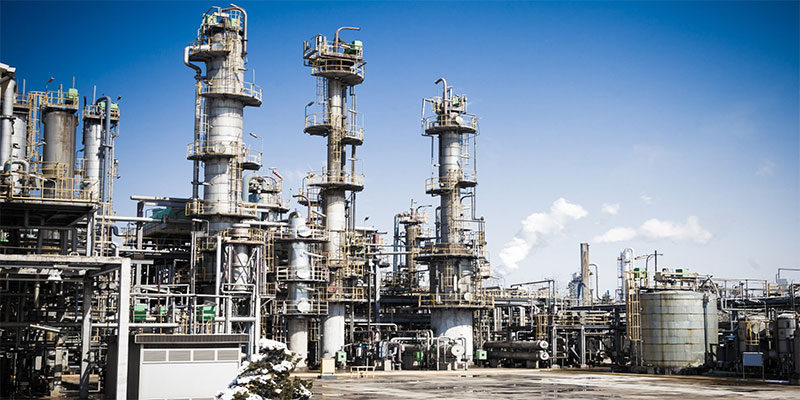In today’s fast-paced business landscape, optimizing processes and workflows has become a top priority for organizations looking to enhance efficiency and productivity. While traditional process improvement methods have served us well, there’s a new kid on the block that promises to revolutionize the way we approach process optimization: Task Mining. In this article, we’ll delve into the world of Task Mining, exploring what it is, how it works, and why it’s considered the next frontier in process optimization.
Understanding the Need for Process Optimization
In a world where time is money, organizations constantly seek ways to streamline their operations and achieve maximum efficiency. Process optimization has long been the key to achieving this goal. Whether it’s reducing costs, improving quality, or enhancing customer satisfaction, the benefits of process optimization are undeniable.
The Evolution of Process Improvement
Over the years, businesses have employed various methods to optimize their processes. From Six Sigma and Lean methodologies to Business Process Management (BPM), these approaches have significantly contributed to operational excellence. However, as technology continues to advance, a new approach to process optimization is emerging: Task Mining.
What is Task Mining?
Task Mining is a cutting-edge technique that leverages data analytics and artificial intelligence to gain deep insights into how employees interact with digital systems and applications. It involves the systematic collection and analysis of digital footprints left by employees during their daily tasks.
How Task Mining Differs from Traditional Methods
Unlike traditional process improvement methods, Task Mining does not rely solely on manual observations and interviews. Instead, it captures real-time data, providing a more accurate and comprehensive view of actual work processes. This data-driven approach enables organizations to pinpoint inefficiencies and bottlenecks with greater precision.
The Role of Automation
Task Mining often integrates with automation technologies such as Robotic Process Automation (RPA) to not only identify problems but also suggest automated solutions. This synergy between Task Mining and automation can lead to substantial productivity gains.
How Does Task Mining Work?
Data Collection and Analysis
Task Mining begins by collecting data on user interactions with digital systems. This data includes mouse movements, keyboard inputs, and application usage patterns. Advanced algorithms analyze this data to reconstruct the user’s workflow.
Identifying Bottlenecks and Inefficiencies
By analyzing the reconstructed workflows, Task Mining can identify bottlenecks, repetitive tasks, and areas where employees may be struggling. This granular level of insight is invaluable for process improvement.
Creating Actionable Insights
Task Mining doesn’t stop at identifying problems; it also provides actionable insights. These insights empower organizations to make informed decisions on how to optimize processes, allocate resources, and implement automation where necessary.
Benefits of Task Mining
Improved Efficiency
One of the primary benefits of Task Mining is improved efficiency. By pinpointing inefficiencies and automating repetitive tasks, organizations can complete tasks faster and with fewer errors.
Enhanced Productivity
Task Mining enables employees to focus on value-added activities rather than time-consuming manual tasks. This leads to increased productivity and job satisfaction.
Cost Reduction

Efficient processes often lead to cost savings. Task Mining helps organizations reduce operational costs, making them more competitive in the market.
Data-Driven Decision Making
Task Mining provides data-backed insights that support informed decision-making. This ensures that process improvements are based on evidence rather than guesswork.
Task Mining and Process Mining
Process Mining and Task Mining are complementary approaches. While Process Mining provides a macro-level view of end-to-end processes, Task Mining offers a micro-level view of individual tasks within those processes. Together, they provide a comprehensive understanding of how processes operate and how employees contribute to them.
Organizations can use Process Mining tool to identify high-level bottlenecks and deviations in their processes. Once these issues are identified, Task Mining can be employed to dig deeper into specific tasks and interactions, pinpointing the root causes of inefficiencies. This combination of macro and micro insights enables organizations to make precise, data-driven improvements.
Challenges and Considerations
Data Privacy and Security
Collecting and analyzing user data raise concerns about privacy and security. Organizations must implement robust measures to protect sensitive information and comply with data privacy regulations.
Employee Resistance
Employees may be skeptical about the idea of their every digital move being monitored. Clear communication and transparency are essential to address employee concerns and build trust.
Integration with Existing Systems
Integrating Task Mining tools with existing IT systems can be challenging. Organizations must carefully plan and execute the integration process to ensure a seamless workflow.
The Future of Task Mining
Advancements in AI and Machine Learning
As AI and machine learning technologies continue to evolve, Task Mining will become even more sophisticated. This will result in more accurate insights and proactive process optimization suggestions.
Integration with Robotic Process Automation (RPA)
Task Mining and RPA will increasingly work hand in hand. RPA bots can automate tasks identified by Task Mining, creating a powerful synergy for process improvement.
Industry Adoption Trends
The adoption of Task Mining is expected to grow across various industries as organizations seek to gain a competitive edge through improved efficiency and productivity.
Real-World Applications

Task Mining in Manufacturing
In the manufacturing sector, Task Mining is used to optimize production processes. By analyzing worker interactions with machinery and software, manufacturers can identify opportunities to reduce downtime and improve product quality.
Task Mining in Healthcare
Healthcare organizations use Task Mining to enhance patient care. By monitoring how healthcare professionals interact with electronic health records and medical devices, hospitals can identify areas for improvement in patient treatment and administrative processes.
Task Mining in Customer Service
In the realm of customer service, Task Mining helps organizations streamline support processes. By analyzing customer interactions with support agents and self-service portals, companies can improve response times and customer satisfaction.
Getting Started with Task Mining
Selecting the Right Tools and Software
Choosing the right Task Mining tools and software is crucial. Organizations should evaluate their specific needs and select solutions that align with their goals and IT infrastructure.
Implementation Best Practices
Successful Task Mining implementation requires a well-thought-out strategy. Organizations should involve key stakeholders, define clear objectives, and continuously monitor progress.
Conclusion
Task Mining is poised to become the next frontier in process optimization. By harnessing the power of data analytics and AI, organizations can unlock unprecedented insights into their workflows, driving efficiency, productivity, and competitiveness to new heights.
In conclusion, Task Mining represents a powerful paradigm shift in the world of process optimization. Its ability to provide granular, data-driven insights sets it apart as the next frontier in achieving operational excellence. As businesses continue to evolve, Task Mining will undoubtedly play a pivotal role in their success. For those looking to embark on this journey, the future is promising, and the rewards are substantial.
If you have any questions about Process Mining, you can book a tour with us right now.



